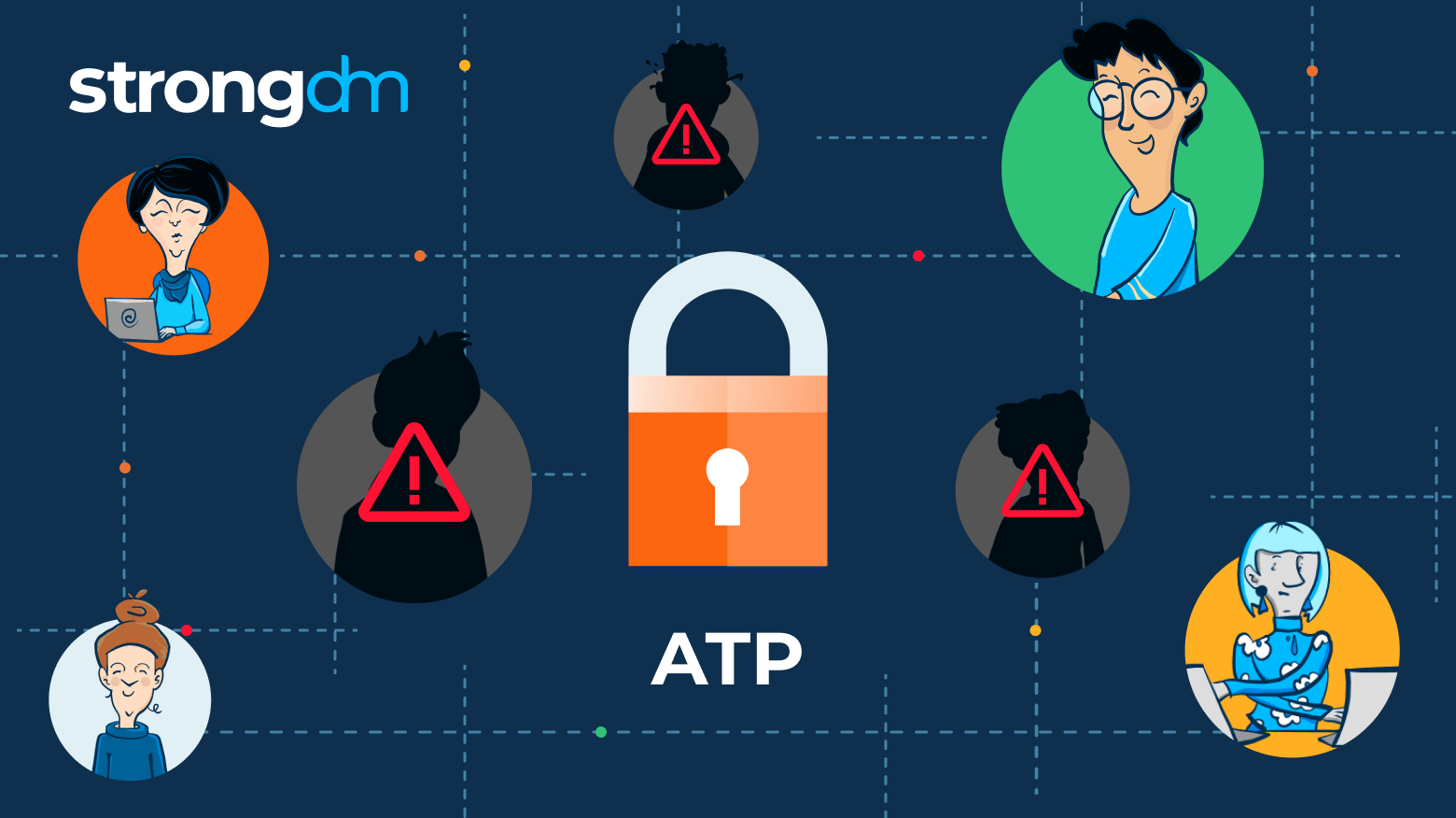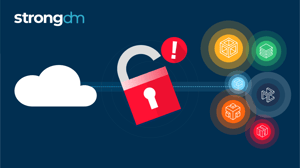Advanced Threat Protection (ATP): All You Need to Know


Written by
John MartinezLast updated on:
June 26, 2025Reading time:
Contents
Built for Security. Loved by Devs.
- Free Trial — No Credit Card Needed
- Full Access to All Features
- Trusted by the Fortune 100, early startups, and everyone in between
In this article, we’ll look at advanced threat protection (ATP) and explore how modern cybersecurity threats evolved from previous cyberattacks, demanding the development of new tools. We’ll cover emerging, complex attacks, the importance and benefits of ATP to thwart attacks, how ATP works, and what to look for in an ATP solution. By the end of the article, you’ll know how ATP protects increasingly complicated infrastructure by offering visibility and contextual intelligence to stay on top of new threats.
What Is Advanced Threat Protection?
Advanced threat protection is a type of cybersecurity dedicated to preventing pre-planned cyberattacks, such as malware or phishing. ATP combines cloud, file sharing, email, network, and endpoint security.
First, what are advanced threats? Also called advanced persistent threats (APTs), these prolonged cybersecurity attacks target a specific organization, forging new access routes and operationalizing tools with the goal of maximizing damage. Often launched by well-equipped actors having nearly inexhaustible resources, advanced persistent threats can stay in a system for weeks or months before being detected. ATP combats advanced persistent threats with technology that goes beyond traditional IT security.
Advanced threat protection leverages real-time monitoring with contextual intelligence, ensuring greater visibility across an organization. ATP scans for threats successfully and provides accurate alerts, so IT teams can prioritize responses. It’s also fully integrated to monitor multiple systems that store enterprise data.
History of Advanced Threat Protection
The idea of complicated threats emerged in the early 2000s, as a wave of large, funded state and private cyber attackers increasingly set their sights on destabilizing business sector targets by introducing infected, downloadable files. At the same time, the growth of cloud computing was making network endpoints more vulnerable.
Both trends left organizations open to high-impact cyberattacks. While the first attacks targeted the government sector in 2006, perpetrators of large APTs, such as Sykipot, saw potential in an expanded toolkit of techniques. They used methods like spear phishing, which disseminates malware via email. Those attacks primarily affected financial, telecommunications, energy, and manufacturing. Today, vulnerable organizations are those that impact city infrastructure or hold government contracts.
ATP: Unique Needs with Evolving Solutions
Because the names of multiple Microsoft products contain the words “Advanced Threat Protection,” many confuse the meaning of ATP with specific, licensed products that include anti-phishing tools. That’s understandable. So, what is ATP?
We define ATP as a suite of protections that goes beyond any single solution. It comprises all the tools deployed toward ATP goals, including an organization’s education and policies. As advanced persistent threats evolve, a new generation of anti-threat protection solutions must emerge to keep up with growing threats, including
- Man-in-the-middle attacks, such as those that use Trojan horses to intercept web traffic
- Bot attacks that use a network of infected devices to gain access to an organization and spread
- Social engineering attacks that impersonate officials to garner trust with the objective of infecting devices
- Brute force attacks, such as those that assault systems with a barrage of password guesses
- Attacks that manipulate mobile code to execute operations on a device
- Log injection to insert false entries into files to obscure the activities of attackers
- Path traversal to locate and access directory files outside the root folder
- Installation of hard-to-remove spyware that extracts data from user devices while it hides in cookies and offline temporary files
Importance of Advanced Threat Protection
ATP is crucial in an era that sees varying attacks occurring on many fronts. Besides launching new attacks, bad actors continually upgrade their preferred methods, finding novel hiding spots and new ways to elude identity verification. For example, one recent Trojan horse successfully circumvented SMS-based authentication that didn’t exist when these programs first emerged. Today, 81% of business executives say that staying ahead of attackers is a constant fight. ATP mitigates the battle, protecting organizations from advanced persistent threats designed to
- Destroy company data, costing organizations millions
- Enrich attackers financially
- Collect intelligence for state and corporate espionage
- Achieve activist goals, such as exposing corporate wrongdoing or greed
Who Benefits from ATP?
With 43% of cyberattacks targeting small businesses, it’s increasingly essential for organizations of all sizes to protect themselves. Often lacking a dedicated incident response team, small and medium companies are particularly at risk.
Benefits of Advanced Threat Protection
Advanced threats are increasingly stealthy, rewriting their logs and transaction records. It takes an average of 50 days to detect a breach, and victims typically suffer extensive damages during this time. Incorporating ATP into an organization’s cybersecurity toolkit can help eliminate that lag and prevent data loss to attackers. ATP also offers benefits such as
- Visibility: Multiple threat detection techniques across various systems provide greater insight into network traffic, including threats. ATP can detect impacted users (including contractors) and devices, from computers to the Internet of Things (IoT)
- Increasingly accurate threat detection: Artificial intelligence (AI) trains advanced threat protection software to detect threats more accurately. That lets IT security agents focus on a subset of alerts that are likely to be malicious, rather than wasting time wading through a large pool of potential false positives.
- New threat detection: In an environment bombarded by increasingly sophisticated network attacks, malware detection needs continuous updating as new threats emerge.
How Does Advanced Threat Protection Work?
Because companies have diverse needs and vulnerabilities, ATP software uses varied approaches and includes many components. Most ATP services monitor the modern organization’s increasingly complex and growing web of attack points. ATP solutions typically offer the following protections:
File analytics: An increasingly important aspect of endpoint security given the rise of mobile devices, ATP analyzes the files that enter a device, regardless of their origin or method of delivery. ATP solutions then examine file functionality and determine if a file can safely execute once transferred.
Attack surface management: Cloud computing and increased work across devices and locations create more logins, and thus, more points of access to a network. Attack surface management provides ways to thwart attacks at endpoints, including control mechanisms, such as application control or sandboxing for transferred files.
Combined threat detection: AI facilitates advanced threat prevention by monitoring access for threats that have already gained entry by circumventing safeguards. Teams can identify ingress faster and remove malware.
Rich threat intelligence: When other industries identify a novel threat, ATP cybersecurity solutions quickly incorporate it into their monitoring toolkits, so that the danger doesn’t plague other organizations. Disseminating this intelligence in real-time is crucial, keeping all organizations safer.
Using AI, advanced threat management can help IT teams detect unusual activity, such as increased logins after hours, higher numbers of backdoor Trojans, atypical data flow, or unexpected data storage formats and locations. With faster identification, organizations can act faster and remove APTs sooner, so attackers have less time to collect sensitive data. It all comes down to AI learning for continuous improvement and automated monitoring.
How to Choose the Right ATP Solution
ATP security is vital to all organizations, but each business has unique needs to consider when choosing an advanced threat protection solution, including
- Regulatory commitments: From HIPAA to GDPR, requirements vary by geographic location and industry. Advanced threat protection solutions need to integrate with compliance technology.
- Scalability: With current security costs rising to unsustainable levels, ATP solutions need to use AI to provide added value in the future.
- Vulnerabilities: What specific data and storage vulnerabilities exist? Choose a new solution that fills the gaps in existing security.
- Ease of deployment: Integrations do not need to be complex. They shouldn’t even require an agent. Onboarding new users must be simple across roles.
Advanced Threat Protection (ATP) with StrongDM
StrongDM’s platform ensures complete visibility into your infrastructure, no matter how complicated it gets. You can add data sources, clouds, servers, containers, and more. No matter how your organization evolves, StrongDM provides simplified access and auditing across your entire stack.
A vantage point across the technical environment is like a lookout tower that helps companies stay on top of advanced threats that are otherwise tough to see. That’s paramount in a world in which 84% of companies experienced an identity breach in the last year, and the cost of breaches is rising, averaging $4.4 million. After all, when no one is looking for breaches, they go undetected longer and carry the risk of greater damage.
Make Access Simple with StrongDM
As resources grow, so does organizational complexity. StrongDM keeps access simple with infrastructure access all in one place. It handles authentication, authorization, networking, and observability, so the development team can focus on mission-critical projects.
Want to see how StrongDM can help you monitor access and avoid advanced threats? Get a free no-BS trial today.
Next Steps
StrongDM unifies access management across databases, servers, clusters, and more—for IT, security, and DevOps teams.
- Learn how StrongDM works
- Book a personalized demo
- Start your free StrongDM trial

Categories:

About the Author
John Martinez, Technical Evangelist, has had a long 30+ year career in systems engineering and architecture, but has spent the last 13+ years working on the Cloud, and specifically, Cloud Security. He's currently the Technical Evangelist at StrongDM, taking the message of Zero Trust Privileged Access Management (PAM) to the world. As a practitioner, he architected and created cloud automation, DevOps, and security and compliance solutions at Netflix and Adobe. He worked closely with customers at Evident.io, where he was telling the world about how cloud security should be done at conferences, meetups and customer sessions. Before coming to StrongDM, he lead an innovations and solutions team at Palo Alto Networks, working across many of the company's security products.
You May Also Like




